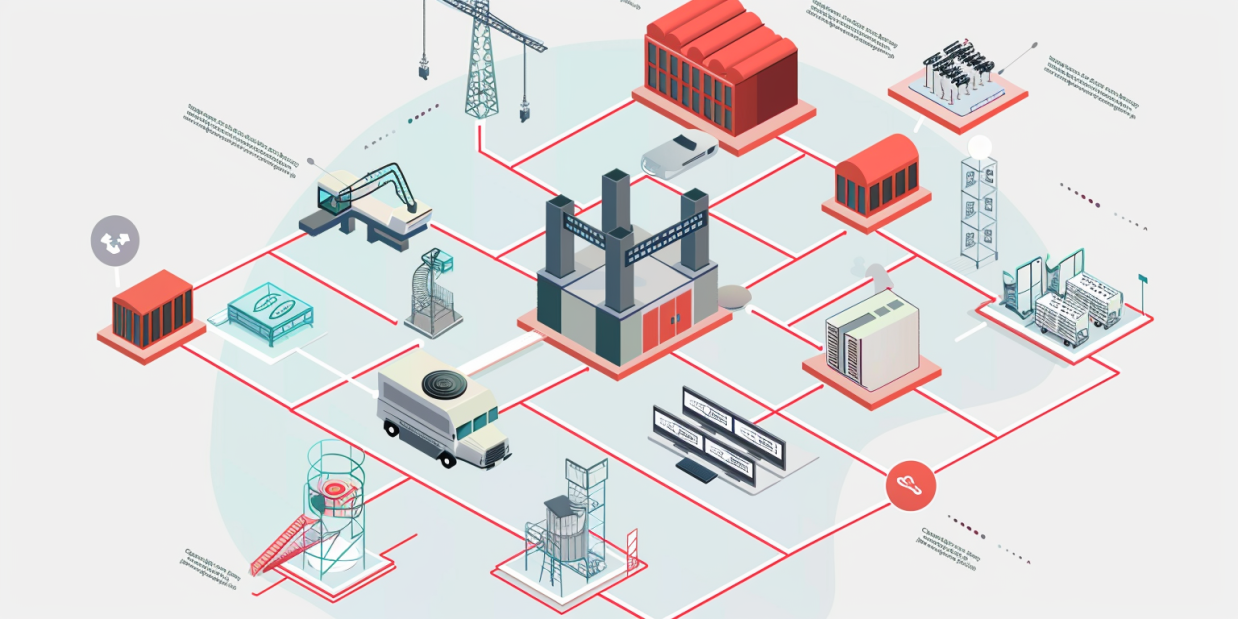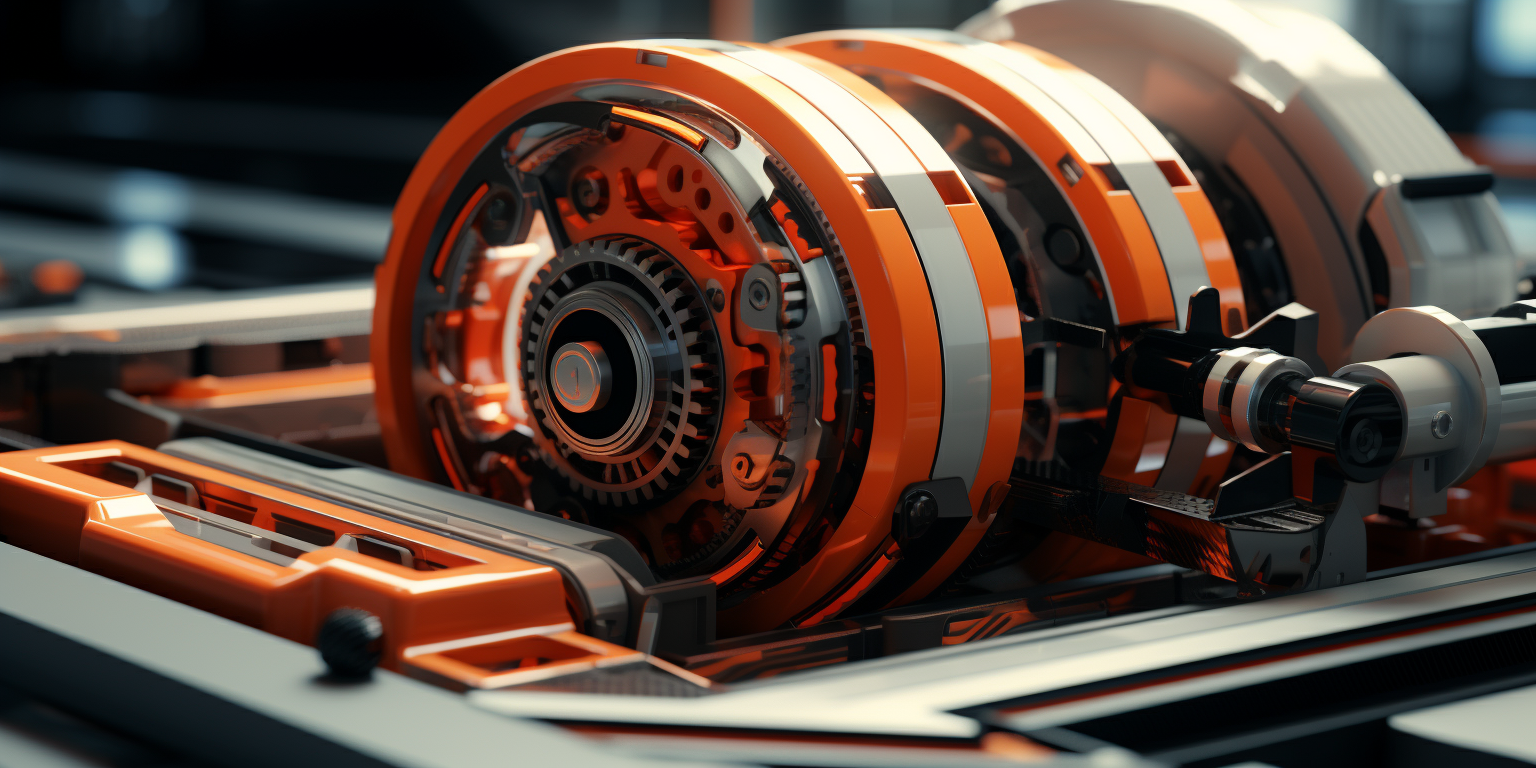Fasten your seatbelts as we take you on an enthralling journey through the skies and beyond. This article will guide aspiring aerospace engineers to their dream profession. We’ll explore the essence of aerospace engineering, its educational requirements, how to choose the right school, the significance of internships, and the advantages of advanced degrees. Discover the vibrant world of aerospace networking, learn about licensing, and prepare for take-off into a rewarding and dynamic career!
Table of Contents
- AeroSpace Engineer: Space has no Limits
- Understanding Aerospace Engineering
- Educational Requirements
- Choosing the Right School
- Academic Preparation
- Bachelor’s Degree in Aerospace Engineering
- Internships and Co-op Programs
- Advanced Degrees and Specialisations
- Introduction to Systems Engineering
- Professional Organisations
- Licensing and Certification
- Ongoing Learning and Professional Development
- Frequently Asked Questions
- What does an aerospace engineer do?
- What is the educational path for an aerospace engineer?
- How long does it take to become an aerospace engineer?
- What skills are necessary to succeed as an aerospace engineer?
- Are there any licenses or certifications required?
- What kind of job opportunities are there in aerospace engineering?
- Is aerospace engineering a good career?
- What subjects should I study in high school to become an aerospace engineer?
- What is the difference between aerospace engineering and aeronautical engineering?
- Do aerospace engineers work for NASA?
- Is a master’s degree necessary for an aerospace engineering career?
- Wrapping Up
AeroSpace Engineer: Space has no Limits
Have you ever watched a plane gliding effortlessly through the sky or marvelled at a spacecraft’s launch, and wondered about the science behind it all? Welcome to the high-tech, enthralling universe of aerospace engineering! In an age where transcontinental flights are commonplace, and aspirations of colonising other planets are no longer mere science fiction, aerospace engineering plays a pivotal role. This field is not only about creating the next aviation marvel or designing a spacecraft; it’s about pushing the boundaries of what we perceive as possible.
Aerospace engineering embodies the spirit of discovery and innovation, integrating a vast scope ranging from aircraft (aeronautics) to spacecraft (astronautics). Guiding an aeroplane through changing weather or directing a spacecraft to distant galaxies, the capabilities required in this profession are as broad as they are fascinating. Embrace the world that maps the journey from the depths of the ocean to the limits of the cosmos.
Understanding Aerospace Engineering
By definition, aerospace engineering focuses on the designing, developing, testing, and optimisation of aircraft and spacecraft. Further divided into two major and overlapping branches: aeronautical engineering (concerned with aircraft that operate within the Earth’s atmosphere), and astronautical engineering (dedicated to the design and development of spacecraft).
Aerospace engineers devise innovative ways to use technological advancements in the service of humanity. Daily tasks might include developing new technologies for use in aviation, defence systems, and spacecraft. They are integral in the creation and maintenance of equipment like commercial planes, fighter jets, helicopters, satellites, and even space shuttles. An aerospace engineer’s role extends from the drawing board and computer simulations to hands-on assembly and quality inspection. The profession is a blend of creativity, precision, and increasingly, sustainability.
Educational Requirements
Becoming an aerospace engineer typically involves completing a Bachelor’s degree in aerospace engineering, mechanical engineering, or another related field. Crucially, prospective engineers must develop a robust groundwork in mathematics and physics during their schooling. Disciplines like calculus, coordinate geometry, and various physics principles are fundamental in understanding aerodynamics, propulsion, and other key aerospace engineering concepts.
An individual must also demonstrate problem-solving skills, logical thinking, an understanding of computerised design, and an aptitude for mechanical drawing. Above all, a budding aerospace engineer needs to maintain an insatiable curiosity about how things work and an energetic drive to improve upon them.
Choosing the Right School
The choice of the right college or university is a crucial step towards becoming an aerospace engineer. Key factors to consider include the accreditation of the aerospace engineering programs, the reputation of the institution, and the expertise of the faculty. Program accreditation assures the quality and relevance of the course in line with industry needs. Coupled with this, the faculty’s expertise often dictates the depth of the course content and the potential for research opportunities.
Moreover, learning in an institution renowned for its aerospace program gives you access to high-calibre facilities and strengthens your resume. The availability of research opportunities and hands-on projects also boosts your learning experience and readies you for real-world scenarios. Finally, consider the physical location of the school – proximity to aviation or space centres can provide additional learning and internship opportunities.
Academic Preparation
While still in high school, you should nurture your interest in aerospace engineering by excelling in subjects like mathematics, physics, and chemistry. Advanced courses in these fundamental subjects can strengthen your basis for future engineering coursework. However, don’t restrict yourself to the classroom! Engage in extracurricular activities related to aerospace or engineering – they not only help build your skills but also bring about awareness of the industry and practical learning.
From participating in science fairs, robotics clubs, or model-rocket groups, to volunteering at local airshows or aviation museums, these activities can enhance your understanding of aerospace. Engaging in these initiatives also communicate to universities your keen interest in aerospace engineering.
Bachelor’s Degree in Aerospace Engineering
An undergraduate degree in aerospace engineering typically spans four years and comprises fundamental engineering principles, advanced math, and specialised aerospace coursework. You will delve into key areas of engineering such as material science, thermodynamics, fluid mechanics, computer programming, control systems, and solid mechanics.
While the topic coverage may seem broad, remember – whether an airplane or spaceship, you are dealing with complex systems requiring intricate knowledge and skills! One of the most exciting features of aerospace engineering studies is the practical projects, which often aim at designing an operational model of an aircraft or spacecraft.
Remember to maintain a balance between theoretical knowledge and practical, hands-on experience in aerospace engineering. Embrace internship opportunities, as they provide valuable insights into real-world challenges and solutions in the industry.
Internships and Co-op Programs
Internships and co-op programs stand as crucial steps in an aspiring aerospace engineer’s journey. They provide invaluable firsthand experiences and a peek into the real world of aerospace engineering. The practical knowledge and industry exposure gained through these experiences often prove priceless, fostering technical abilities, soft skills, and professional networking.
Finding the right internship or co-op program is about more than scanning job boards. Directly contact aerospace firms or organisations, attend career fairs, and leverage your university’s career services. When applying, demonstrate not only strong academic performance but also your passion for aerospace engineering, any relevant projects, and involvement in extracurricular activities. Remember, an internship is a stepping stone to potential full-time employment after graduating.
Advanced Degrees and Specialisations
While a bachelor’s degree forms a solid foundation, pursuing a master’s or Ph.D. in aerospace engineering takes you to the next level. Advanced degrees allow for greater specialisation, opening doors to research and development roles, teaching positions, or more complex areas within the aerospace industry. Specialisations could range from propulsion and structures to avionics and space systems, each one brimming with unique challenges and opportunities.
Choosing a specialisation is often about finding a balance between personal interests, career goals, and industry trends. Opportunities for gaining deep expertise in subfields of aerospace engineering are boundless. Thus, higher education not only enhances your understanding but also increases your credibility and competitiveness in the ever-evolving aerospace landscape.
Professional Organisations
Professional organisations play an integral role in our professional development and advancement as aerospace engineers. By building connections with peers and seasoned professionals in the field, you can gain in-depth industry insights, catch up on the latest technological trends, and even discover potential career opportunities.
American Institute of Aeronautics and Astronautics (AIAA)
The AIAA is a prominent international organisation with a primary goal of advancing the arts, sciences, and technology in aerospace. By participating in this institution, you are plugging into a network that boasts great minds in aerospace engineering from all over the world. Engage in think-tank events, seminars, and conferences – avenues where you can exchange knowledge, learn, and rub shoulders with those who share your passion.
National Society of Professional Engineers (NSPE)
The NSPE, while not exclusive to aerospace engineers, is another commendable professional institution. This society is committed to maintaining engineering excellence by offering regular development programs, training, and ethical behavioural guidance. Here, networking opportunities are rich and potentially career-shaping, as the nature of this broad society brings together engineers from various branches.
By joining these professional organisations, your horizon widens far beyond the university or workplace. Bear in mind, however, that while they offer monumental benefits, your active participation and eagerness to learn are key to reaping their full benefits.
Never stop learning. In the fast-evolving world of aerospace engineering, keeping up-to-date with the latest technological advancements and industry trends is crucial. Regular participation in workshops, conferences, and continuing education is key to career progression.
Licensing and Certification
Securing the right licensing and certification is crucial in the trajectory of your career as an aerospace engineer. The requirements may vary from place to place, but they generally provide a competitive edge, leading to better job prospects, career advancement opportunities, and wider industry recognition.
Professional Engineer (PE) License
Obtaining the Professional Engineer licence is a significant milestone. This certification is a testament to your high level of competence and ethical standards, and it enhances your prestige among peers and potential employers. The licensing process typically involves two principal stages. First, you’ll need to pass the Fundamentals of Engineering (FE) exam after earning your bachelor’s degree. After gaining at least four years of work experience in the engineering field, you’ll then be eligible to sit for the Principles and Practice of Engineering exam.
After successful completion and obtaining your PE license, you’ll be entrusted with greater responsibilities and choices. Not only does this licence open the door to leadership and managerial roles, but it also allows you to stamp and seal engineering projects and render public engineering services.
Every career path demands effort and determination. By selecting aerospace engineering, you choose to contribute to a field of limitless potential and thrilling opportunities. Getting licensed isn’t merely about adding another credential to your name; it’s about pledging your commitment to the never-ending pursuit of scientific and technological advancement in the aerospace realm.
INCOSE Certification
Alongside the PE license, a reputable certification for systems engineers is the International Council on Systems Engineering (INCOSE) certification. This globally recognised endorsement reflects your professional capability in the field of systems engineering and adds considerable weight to your portfolio. Earning this certification demonstrates your commitment to maintaining an industry-standard level of expertise. For more information, refer to this guide on becoming a certified systems engineer with INCOSE.
After successful completion and obtaining your PE license and potentially your INCOSE certification, you’ll be entrusted with greater responsibilities and choices. These not only open the door to leadership and managerial roles, but also allow you to stamp and seal engineering projects and render public engineering services.
Every career path demands effort and determination. By selecting aerospace engineering, you choose to contribute to a field of limitless potential and thrilling opportunities. Getting licensed isn’t merely about adding another credential to your name; it’s about pledging your commitment to the never-ending pursuit of scientific and technological advancement in the aerospace realm.
Ongoing Learning and Professional Development
As an aerospace engineer, it’s essential to remember that your learning journey doesn’t end once you’ve obtained your qualifications and professional licences. In fact, the ever-evolving nature of this field makes continuous learning and professional development an absolute necessity.
Industry Advancements
This industry moves swiftly, powered by constant technological advancements and novel scientific discoveries. As such, staying updated with these changes is vital to remain relevant and excel in your role. Regularly reading scientific journals, online articles, and industry-related publications can keep you well-informed.
Conferences and Workshops
Active participation in conferences and workshops also offers a plethora of benefits. These platforms provide opportunities to network with other professionals, acquire knowledge from industry leaders and learn about cutting-edge research and innovative methodologies.
Continuing Education
Continuing education courses, whether online or in person, are a great way to bolster your skills and learn about new developments in aerospace technology. Universities and professional bodies often offer these courses, which can cover a diverse range of topics relevant to the industry. Whether you’re delving deeper into a familiar subject or exploring completely new terrain, continuing education is a valuable tool for ongoing professional enhancement.
By committing to ongoing learning and professional development, you help ensure that your knowledge and skills never become obsolete. Persistence, curiosity, and a willingness to continually challenge your understanding are the hallmarks of a truly successful aerospace engineer.
Frequently Asked Questions
What does an aerospace engineer do?
Aerospace engineers design, develop, test and help produce aircraft and spacecraft. This includes commercial airplanes, military aircraft, satellites, rockets, and even space vehicles. They handle complex calculations, create blueprints, propose budgets, and collaborate with teams to ensure production processes run smoothly and safely.
What is the educational path for an aerospace engineer?
The path typically starts with a bachelor’s degree in aerospace engineering or a related field. Courses cover areas like aerodynamics, structures, propulsion, and systems engineering. To enhance job prospects or focus on a specific research area, some individuals pursue a master’s or doctoral degree. Additionally, internships and practical experiences play a pivotal role in becoming industry-ready.
How long does it take to become an aerospace engineer?
After completing high school, a bachelor’s degree in aerospace engineering generally takes four years of full-time study. If you decide to pursue a master’s degree, expect another two years. Add in pre-licensing work experience, and you could be looking at around nine years from finishing high school to becoming a fully licensed aerospace engineer.
What skills are necessary to succeed as an aerospace engineer?
A strong foundation in maths and science is crucial. Proficiencies in system thinking, spatial awareness, computational skills and problem-solving are equally important. Additionally, excellent communication skills are key for collaborations and project presentations. Creativity, curiosity, and an unwavering commitment to constant learning also distinguish successful aerospace engineers.
Are there any licenses or certifications required?
While licensure requirements can vary by country, many aerospace engineers find obtaining the Professional Engineer (PE) licence beneficial to career growth. An additional advantageous certification is the INCOSE certification offered by the International Council on Systems Engineering.
What kind of job opportunities are there in aerospace engineering?
The aerospace engineering field boasts a wide array of opportunities in multiple sectors. Aerospace engineers can find work in aerospace product manufacturing, engineering services, federal government, and even scientific research and development services.
Is aerospace engineering a good career?
Absolutely! Aerospace engineering is a highly rewarding field, particularly if you have a passion for aircraft or spacecraft. The work often involves innovative technology, which presents unique challenges and opportunities. Additionally, aerospace engineers often earn salaries that are well above average, making it an attractive career choice.
What subjects should I study in high school to become an aerospace engineer?
A strong foundation in mathematics, physics, and chemistry is critical. Taking advanced courses in these subjects can set you up well for your further studies in aerospace engineering at university. Computer science, technology, and design can also prove beneficial, given the digital and design aspects of the field.
What is the difference between aerospace engineering and aeronautical engineering?
While the two fields are similar, aeronautical engineering is actually a subset of aerospace engineering. Aeronautical engineering focuses specifically on aircraft that operate within the Earth’s atmosphere, such as planes and helicopters. Aerospace engineering, on the other hand, encompasses both aircraft (aeronautics) and spacecraft (astronautics).
Do aerospace engineers work for NASA?
Yes, many aerospace engineers find positions at NASA, where they contribute to various aspects of space exploration and technology. Working for NASA often provides the opportunity to work on groundbreaking projects that push the boundaries of our knowledge and technology.
Is a master’s degree necessary for an aerospace engineering career?
While a master’s degree isn’t a requirement for all aerospace engineering positions, it can certainly open up more specialized career paths and enhance career prospects. Whether in propulsion, space systems or avionics, a master’s degree can allow you to delve much deeper into a specific area of interest.
Wrapping Up
A career in aerospace engineering sparks enthusiasm for those captivated by the mysteries of our universe. It’s a path that combines excitement, creativity, and rigorous scientific investigation. Whether your goal is to design sophisticated aircraft, contribute to space exploration, or simply advance humanity’s understanding of the skies above, the journey begins with sound education, extends beyond into experiential learning, and is nurtured by ongoing exposure to industry advancements.
Remember, it’s not just about gaining the right qualifications and being passionate about the subject matter. It also encompasses joining professional organisations, staying informed about the latest technological breakthroughs, and continuously developing your skills throughout your career.
Embrace the journey of becoming an aerospace engineer, where our planet’s boundaries merely represent the starting line, and the universe is the goal. Every step of the way presents an opportunity to learn, grow, and fuel your journey to the stars.








